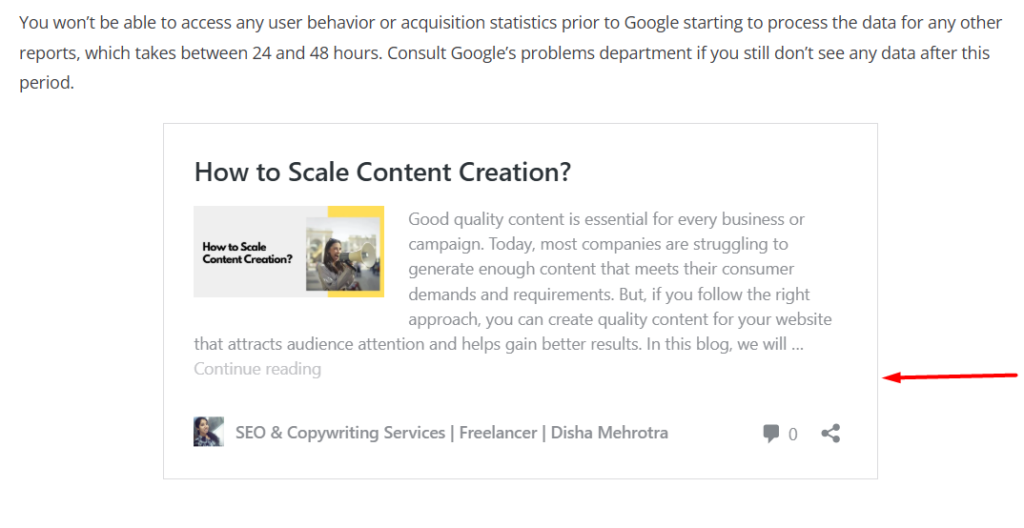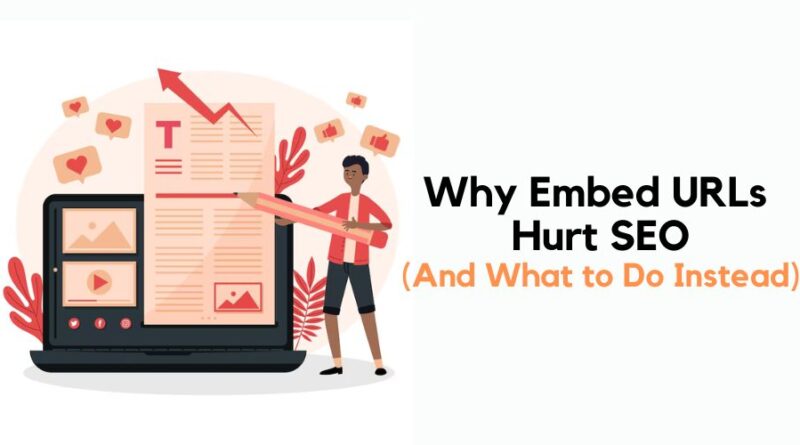Why You Should Avoid Linking to Embed URLs or Overusing Them?
While performing competitor analysis in SEO, we often come across new ideas and strategies. Most companies incorporate these strategies to uplift their ranking and engagement scores. What they miss out on is research and analysis before implementation.
Years back, I found a new way to add internal links to blog posts – embed URLs. The process was quite simple and looked attractive on my page. Further, it highlighted the topic and featured image, which I thought would be a great strategy to increase my engagement score.
So, I did it.

I started linking to embed URLs without proper research. I am not trying to say it is a wrong or bad strategy, but the unnecessary use of embedded URLs and over-embedding your own blog posts can affect SEO.
Overusing embeds in a blog may seem harmless, but it can damage your site’s performance and search engine visibility. In this blog, we will discuss why linking to embed URLs should be limited and what to do instead.
Before that, let’s understand Embed URLs.
What Are Embed URLs?
On WordPress, users can embed blocks in their blog posts to create a special preview page. Embed URLs are links that show little information about your linked page with featured images directly within your page without jumping to the other page.
I used Elementor to embed one of my website URLs. The process is quite simple and the results are amazing.

Why You Should Avoid Linking Internally to Embed URLs?
Now, most of you might be thinking – what changed my mind? Here are some of the reasons why I figured out that linking to embed URLs is not a great strategy:
- They’re Not Meant for Indexing: Embed URLs are created for preview purposes, not for users or search engines. These URLs are noindexed, so if you link them internally, you’re not passing the crawlers or users to a page that’s not the main content.
- They Waste SEO Value: The purpose of linking webpages is to pass link equity. But, with embed page linking practices, you are not passing link equity as it isn’t designed to rank. Basically, your blog post is missing out on creating valuable internal links.
- Poor User Experience: Rather than visiting the full article, they may land on an embed page URL that is a preview version of your original blog URL, resulting in confusion and less engagement.
- Crawl Budget Issues: Google crawlers only spend a limited time on your website to collect information. Now, incorporating these embedded URLs that are not to be indexed may cause delays in crawling and indexing important pages.
When I created an embed URL for one of my blog pages and used a trusted tool like Screaming Frog to analyze my website, it showed me the error “Cannonicals: cannonicalized”.
In Screaming Frog, when a page is marked as “Canonicalised”, it means that the page has a canonical tag pointing to a different URL — not to itself.
So, I ran a check on my website and found the page on which I embed my other post URL. On checking the source code, I found the URL – https://www.thewebstore27.com/blog/how-to-set-up-google-analytics/embed/
The embed page was noindexed and had a canonical tag pointing to the main blog URL – https://www.thewebstore27.com/blog/how-to-set-up-google-analytics/. This is correct canonicalization and has no issue.
But what you should avoid is:
- Linking internally to the /embed/ version anywhere else on your site. As said, blog embeds can cause SEO issues.
- Embedding your own blog posts too much if not needed.
Why You Should Limit Embedding Your Own Blog Posts?
Embedding blog posts within your own website may look visually appealing, but there are several drawbacks of overusing blog embeds.
1. Slower Page Load
Each embed includes extra code (like iframes) that needs to be loaded separately. This may result in slowing down your web speed—especially on mobile devices. Thus, increasing your bounce rate.
2. Adds Unnecessary Complexity
Search engines might get confused due to multiple embeds that create cluttered code. Further, too many embeds result in more server requests and the creation of additional canonical tags.
3. Creates Duplicate Content Signals
Each embed can create a separate page that search engines may interpret as a duplicate. Even with canonical tags in place, too many duplicates can dilute your SEO signals.
4. Weakens Link Strength
A regular HTML link passes SEO value clearly. However, an embedded iframe or block doesn’t carry that same direct SEO benefit.
What Needs To Be Done?
It is best to use clean internal links or add anchor text in your content for internal linking.
WordPress offers you endless features but that doesn’t mean you apply all of it without research. For effective SEO, it’s best to use embedded URLs sparingly and avoid linking to embedded URLs internally.
User experience, site speed, and other factors play a key role in ranking your website. Audit your website and look for such issues.
For more such insights, follow us on LinkedIn.
